Part 1: Artist Interview Series
In the concluding segment of our interview series for Dissonant Beauty, on view at the Rejina Pyo store until April 30, 2025. Part 3 brings the series to a close, exploring the distinctive philosophies and practices of Jiahe Zhang and Lyson Marchessault.
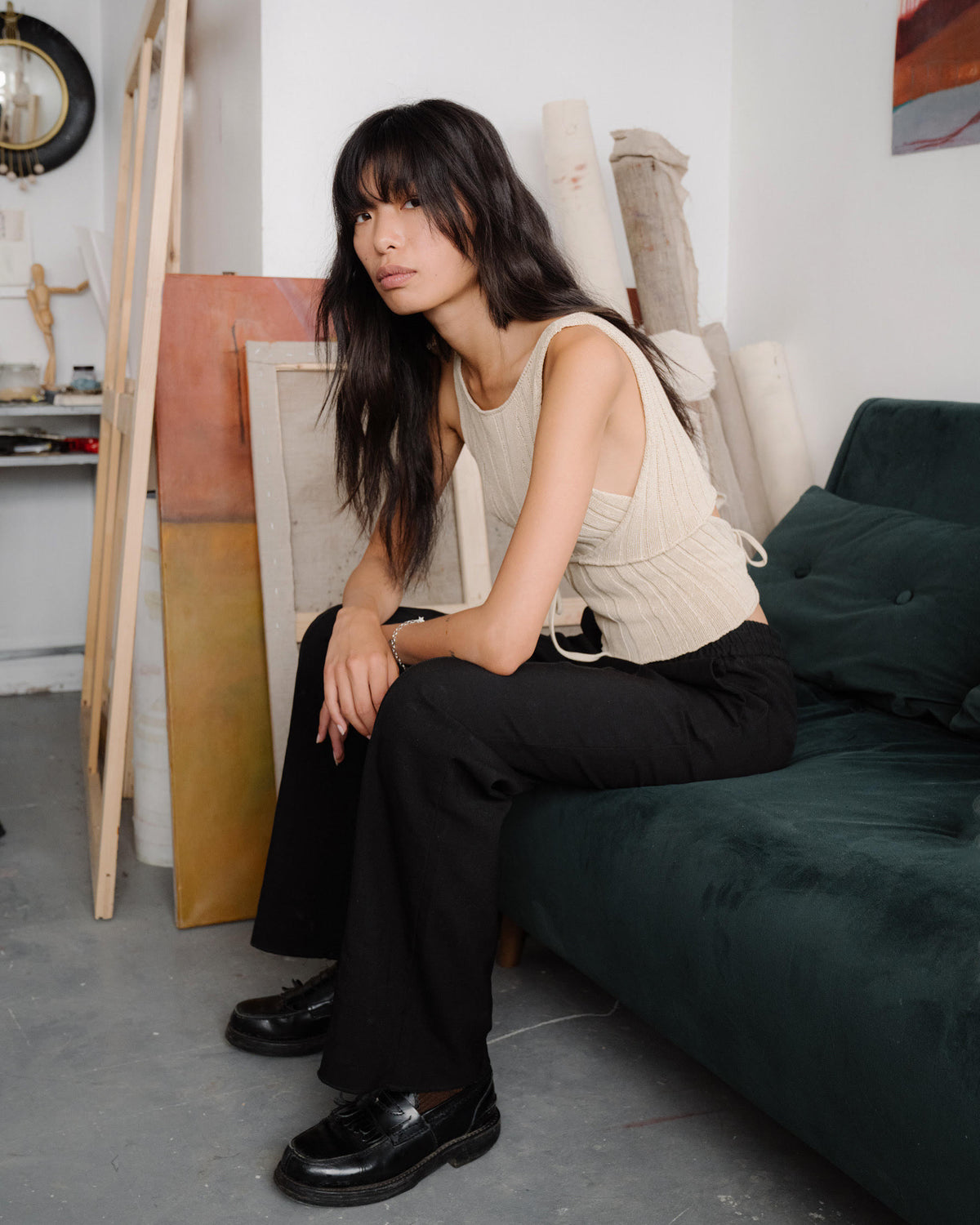
Jiahe Zhang
Jiahe Zhang b. 1997, China. Lives and works in London, UK. Her painting practice is informed by research and framed by lived experiences and relationships. Once drawn to the surreal and Escapism, she is now tethered by the greyer grit of The City.
Q: Can you tell us a bit about your art practice?
My practice is mostly concerned with painting and informed by research, framed by my lived experiences and relationships.
Q: How would you describe your style or creative process? What draws you to particular materials, colours, techniques etc?
I like to paint ambient scenes and figures, the ideas come from my research. (I like to dig through the internet and books.) Which I do everyday. Library and outside time is very important to me in my creative process. I have always preferred a dark and rich colour palette, however I tend to add a brighter accent to most of my work. I believe that ‘you can’t have too much of a nice thing.’ And that’s how I feel about visual arts, I try to avoid indulgence when making stuff. I like the fan brush and linen, these are great for achieving the ambient, gritty feel I need.

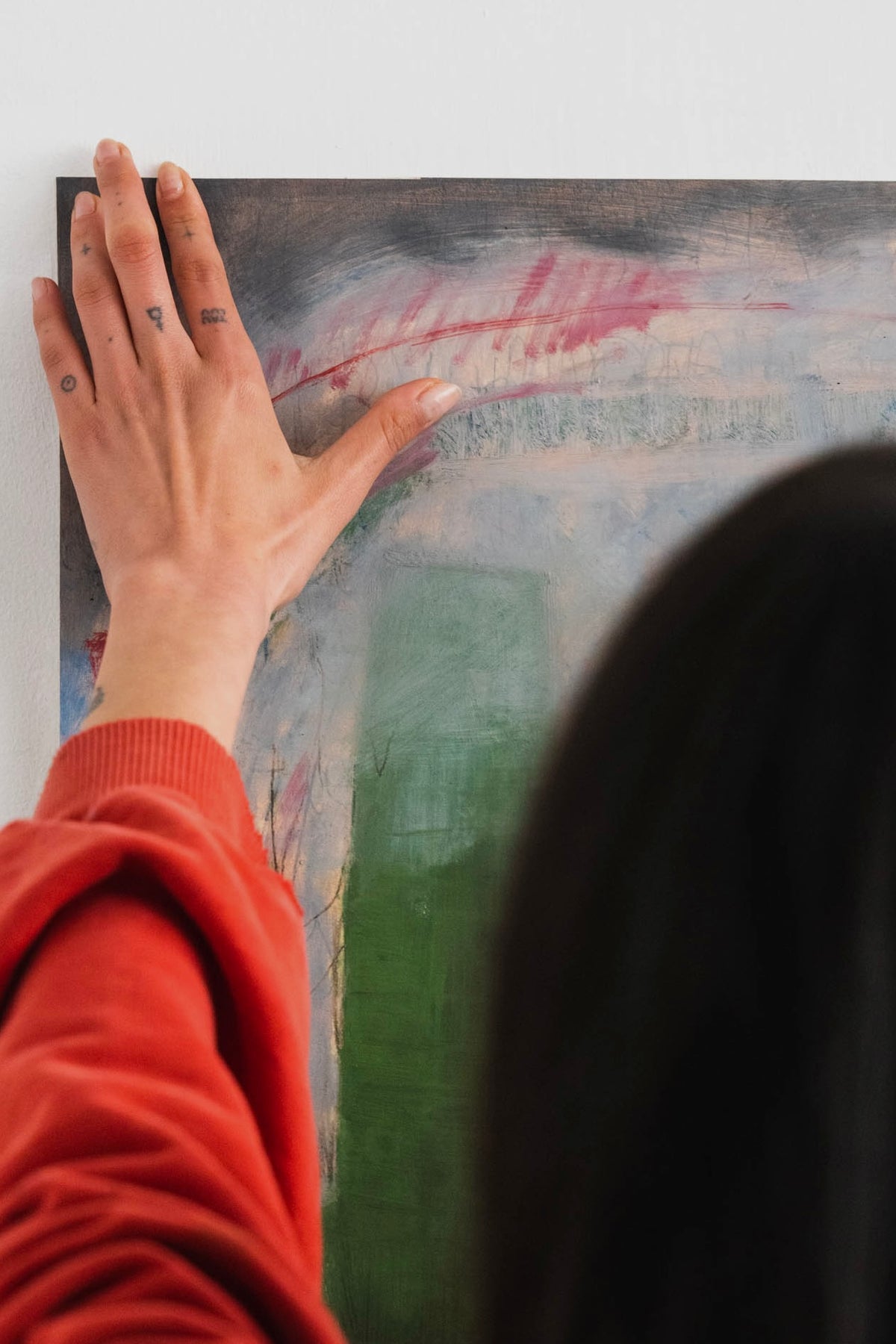
Q: What themes, concepts or processes do you tend to explore?
I was born and raised in the city and this sort of atmosphere has had a profound impact on my psyche and personal philosophy. I think because of this I am drawn to ambient themes like I said. Once through a more surrealistic, subconscious, ‘far away’ lens, now I am more interested in the grey and gritty and the present. Our world has become much flatter, and what I thought once was ‘far away’ is actually all around me.
Q: Can you tell us about the pieces showcased?
‘I am born again all the time’ and ‘Resurrection in Pollença’ were both painted during the dregs of Covid. ‘Hedgie’ was painted in the summer of 2024. I think they look great in the dark frames we had made for the show.

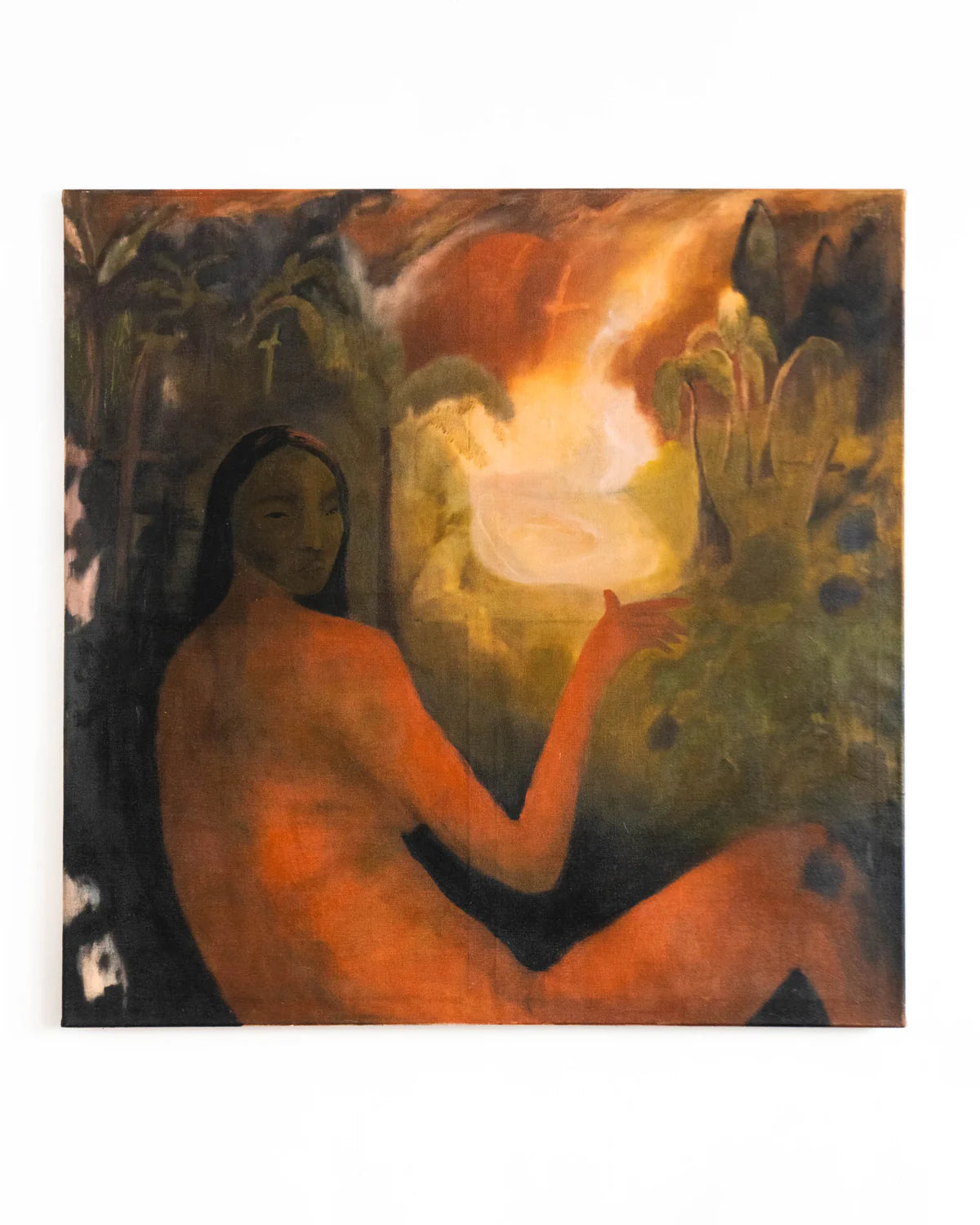
Q: What is the inspiration behind this body of work?
For ‘I am born again all the time’ and ‘Resurrection in Pollença’, when I painted these I was feeling low and lost and was reading a bit of Lacan and Jung at the time, I think that shows through by my use of symbols and motifs. I started painting not that long before these paintings and was quite self- indulgent… ‘Hedgie’ is a study I did of my ex-boyfriend in my studio on Ridley Road, the light in there is very attractive in the late afternoon.
Q: What does beauty mean to you when it comes to art?
I think beauty is truth, understanding and the willingness to learn, and it’s the same when it comes to visual arts for me. I think when this exists in the artist, we can feel it in the work and be moved.
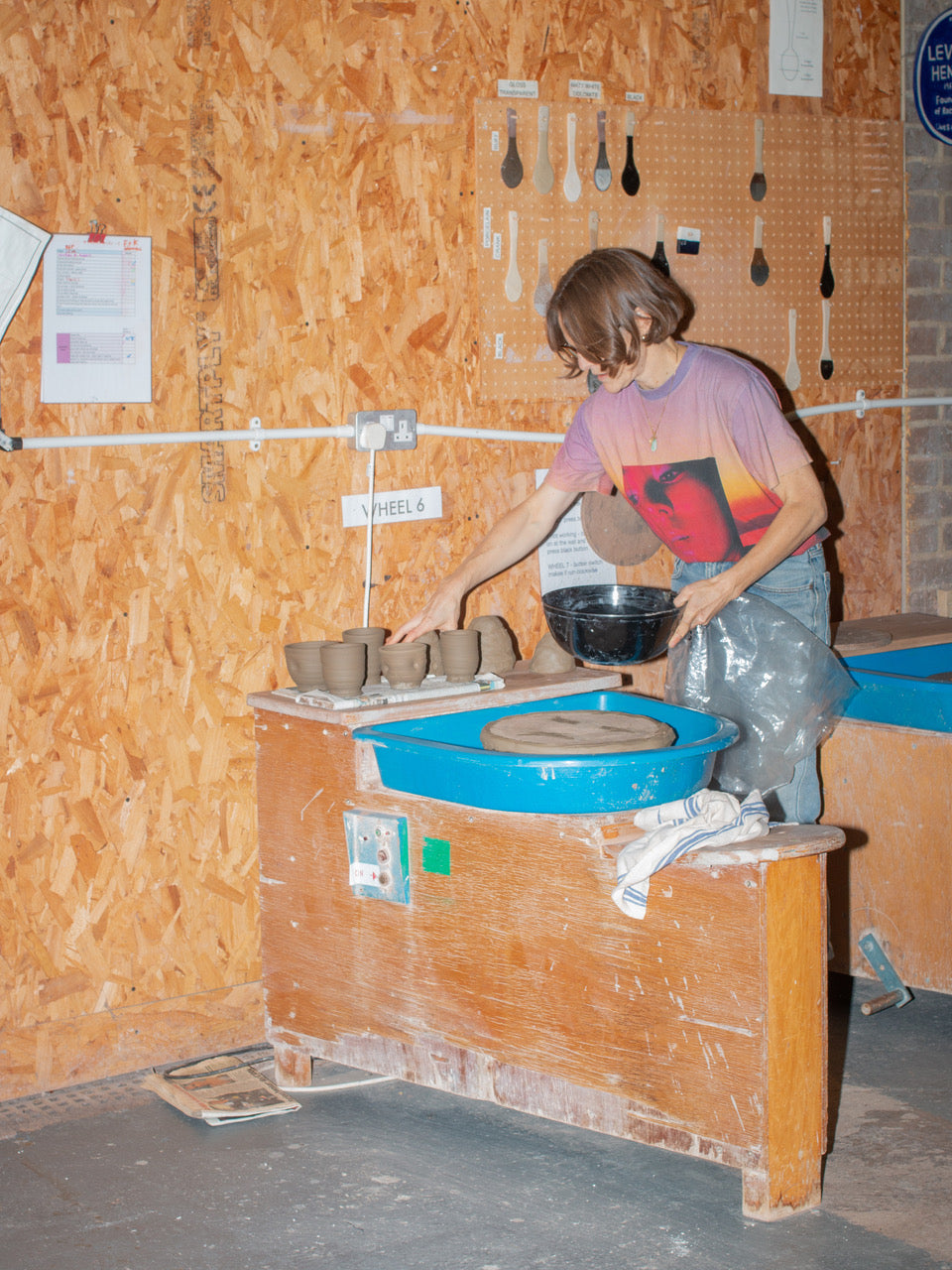
Lyson Marchessault
Lyson Marchessault b.1981 is a Canadian-British multidisciplinary artist working predominantly with clay, nature and communities. Her work has an interest in ancient techniques and forms, incorporating folklore, myth and rituals into her pieces. Part of her practice also involves ecology, fermentation and regenerative art, interested in defining a connection to the self, the earth, and the living.
Q: Can you tell us a bit about your art practice?
I struggle a little to call myself an artist, I like to talk about it simply – as I came into this field after spending time working in fashion. I guess that I make things as a way to make sense of the world. In addition to ceramics, I work with the land, exploring permaculture, food forestry and sustainable agriculture – so ceramics have become one part of a broader interest in making, while trying to preserve and be inspired by the natural world.
Q: How would you describe your style or creative process? What draws you to particular materials, colours, techniques etc?
Clay dictates most often what I’ll be making, it depends on its origin, its particularities and demands. I tend to stretch it to its maximum, see where I can push it. I take it as an exercise in observation, see how clay behaves in specific seasons, temperatures and atmospheres, to then be able to create what I had imagined at the start of the making. I also take inspiration from finding, harvesting and processing the materials themselves. When working I try to think of where the clay, glazes and other elements come from, and how that can influence what is created.
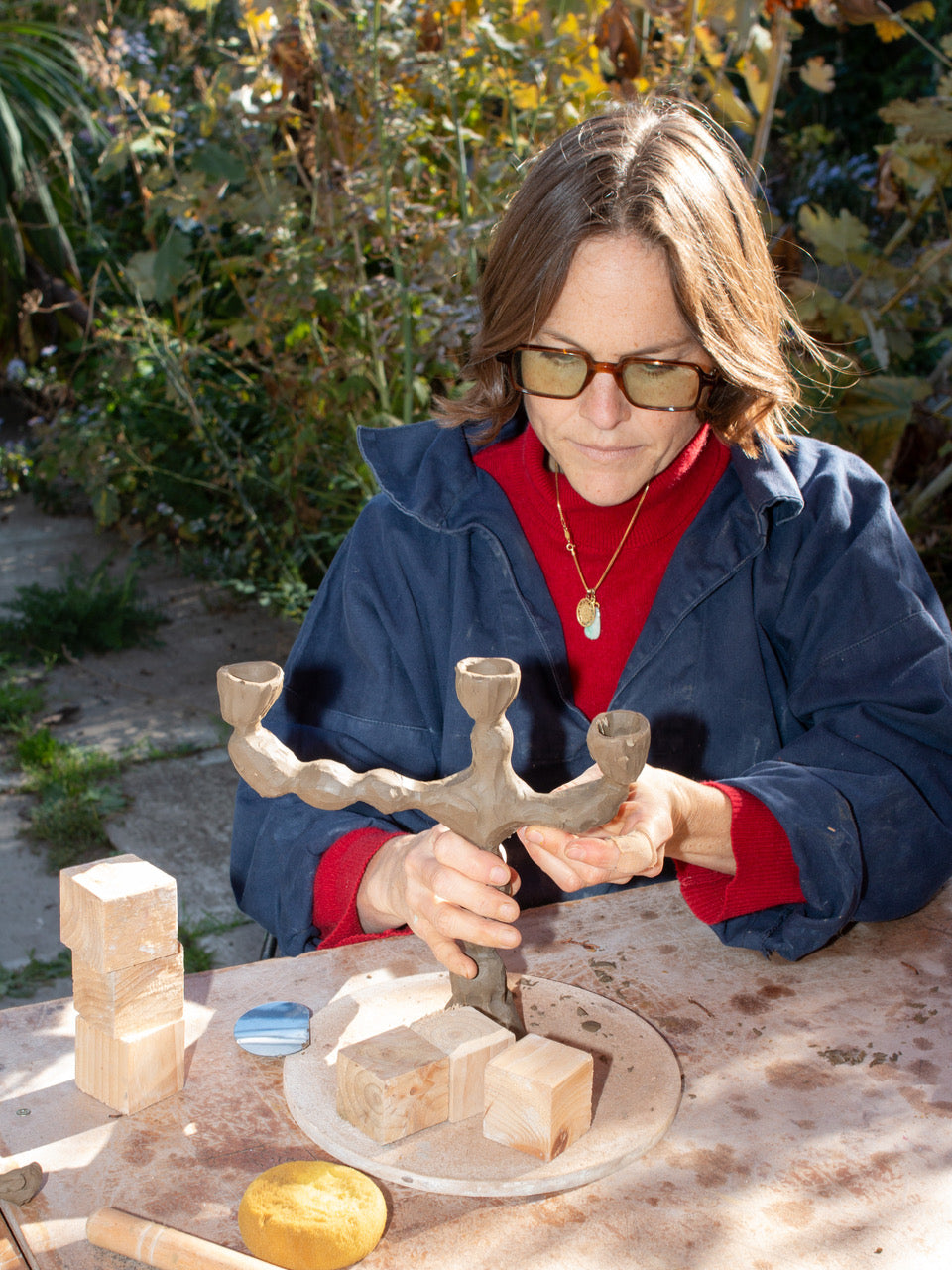
Q: What themes, concepts or processes do you tend to explore?
The UK’s rich history of paganism as well as its myth and folk stories has had a great influence on my work - there’s also the fact that we are living on an island of clay, which makes it interesting to dig around the country and experiment with their regional intricacies.
Q: Can you tell us about the pieces showcased?
“The Joy’ series is based on everyday movements, to get out of one’s head and just feel whatever comes. The vessels were inspired by ‘The Carrier Bag Theory of Fiction’ by Ursula K. Le Guin where she expands on metaphorical carrier vessels of experience filled with memories of the past that we carry with us.
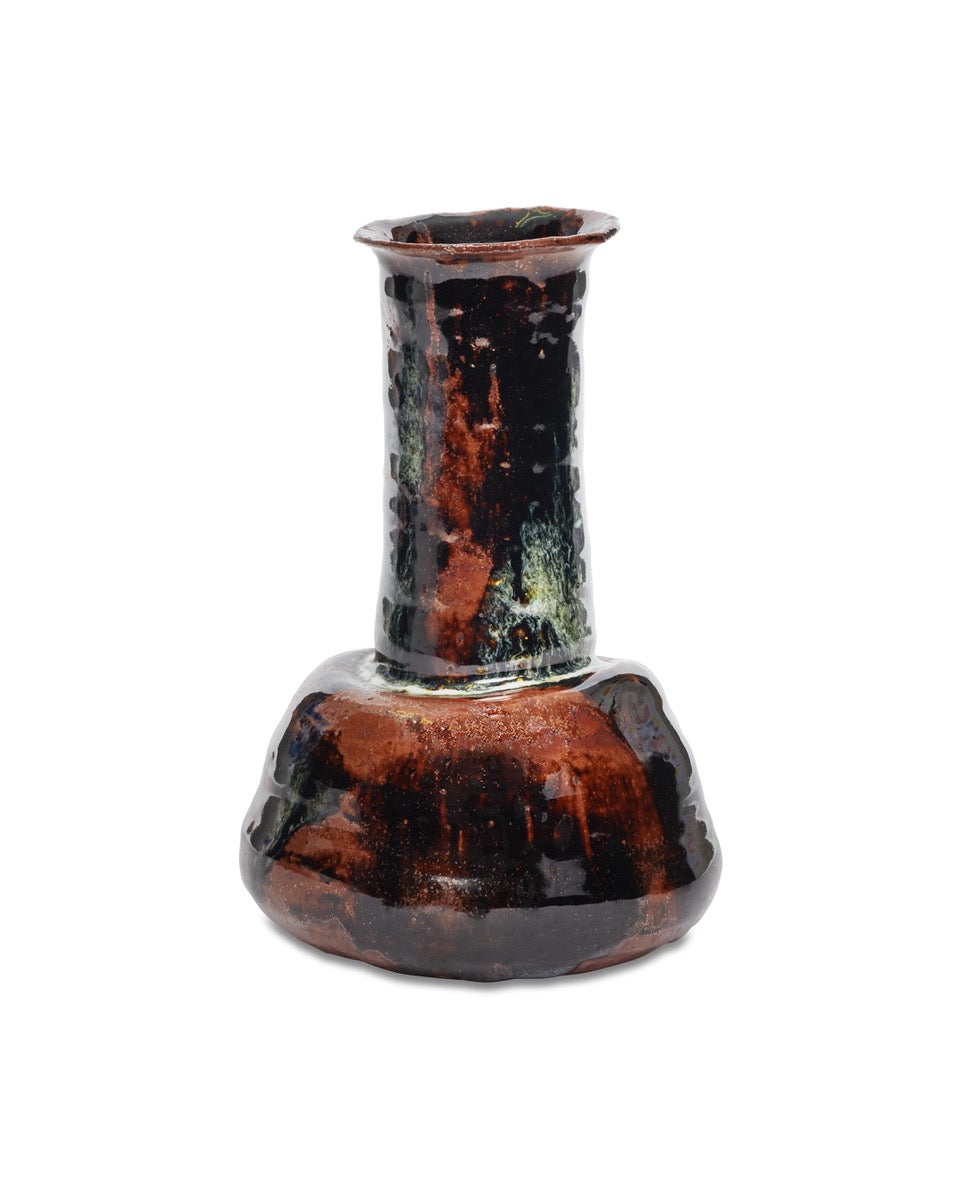
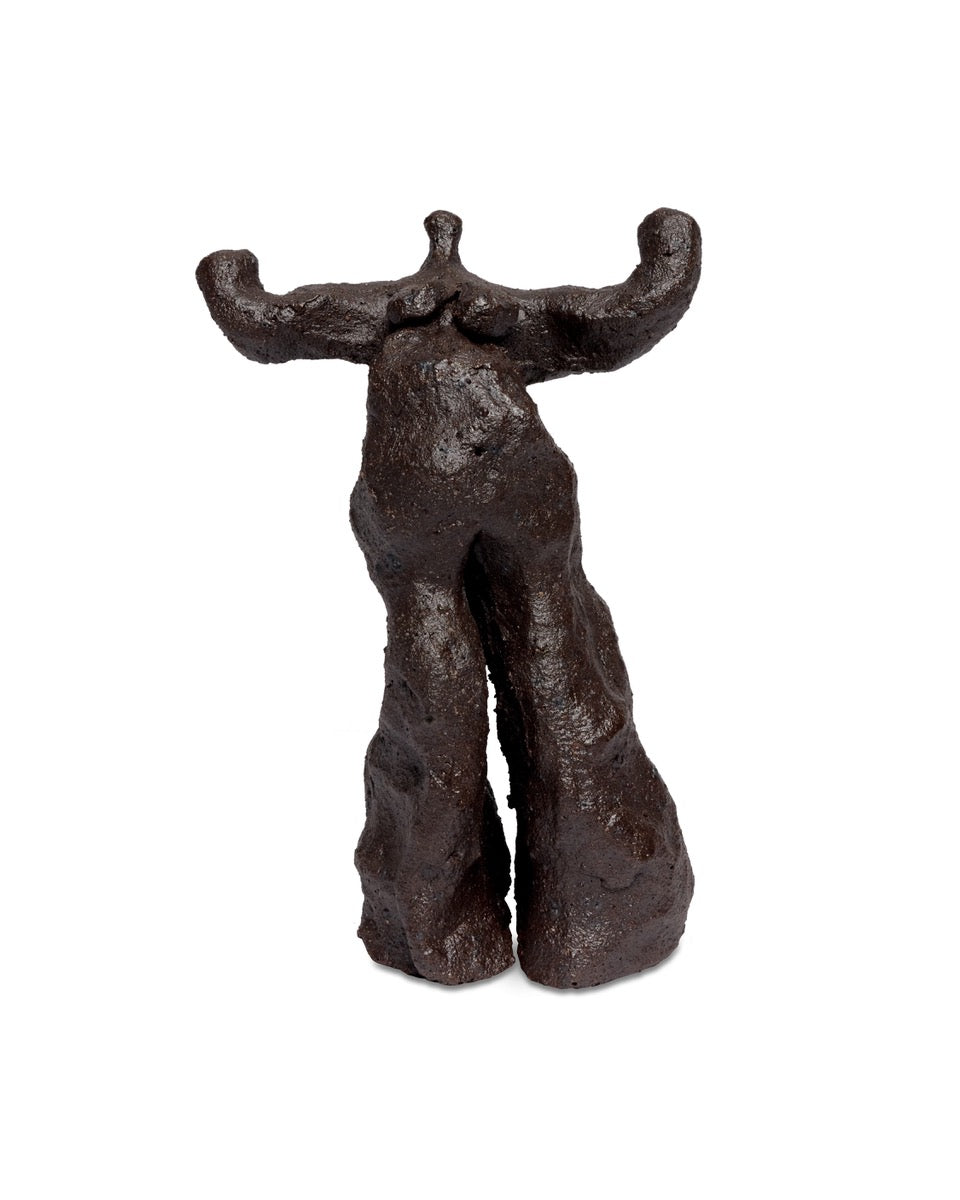
Q: What is the inspiration behind this body of work?
Existence, experience, myths, ecology, the female body (…)
Q: What does beauty mean to you when it comes to art?
Beauty is so subjective. I can’t dictate one’s taste or what beauty is when it comes to art. There’s so much to unpack here when it comes to beauty and what touches someone. It is contextual and a very personal relationship between the viewer and the piece.



